With my years of teaching experience, I’ve realized the importance of incorporating brain breaks for high school students into the classroom routine. Just as adults occasionally need a day off for a mental reset, high school students also benefit greatly from regular brain breaks. Recognizing this need is crucial, especially considering that high school can be one of the most challenging periods in a person’s life. You most likely can think back and remember what it was like to be in high school. The repetition of lectures, notetaking, presentations, and exams was daunting.
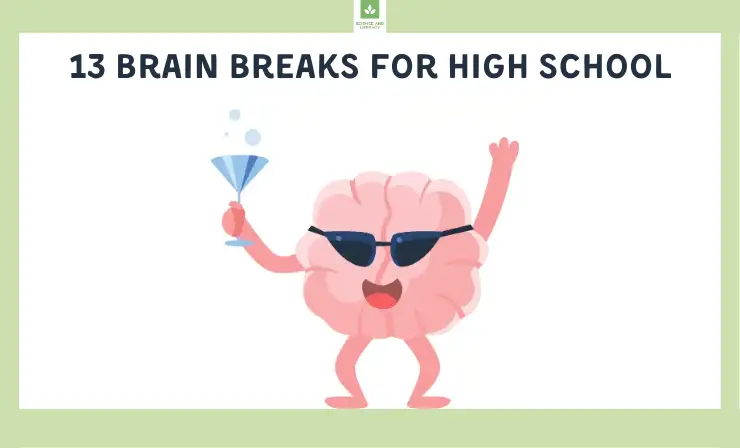
From my personal experience, high school years were challenging, and I was eager to leave them behind. This motivated me not to let my students feel the same way. I wanted them to enjoy their time at school by incorporating periods for relaxation and fun, which inspired me to write this article. The aim is for other teachers to read this and decide to include these breaks in their curriculum, offering students globally a more enjoyable experience than ours. By adding this small gesture to our lesson plans, I believe we can significantly enhance the mental health and well-being of future generations.
Brain breaks in our high school library pic.twitter.com/uDvRWJ7pmf
— Krista Berger (@NBHSLibrarian) December 18, 2023
After reading this article, you will officially know:
- What a brain break is →
- The benefits of brain breaks →
- And several fun brain break activities for high school students →
In my classes over the years, I have tried out many different brain break activities to see what works best. Certain activities worked better for some of my classes, while others worked better for other classes. It is all about your students and their preferences, which is why my advice is to try out different ones.
| Brain breaks | Difficulty level | Developmental benefits |
| 1. Activity Pages | Low | Enhances problem-solving and pattern recognition through puzzles; coloring and creative tasks boost imagination. |
| 2. Would You Rather Game | Low | Encourages communication and understanding of diverse perspectives; stimulates critical thinking and decision-making. |
| 3. Quiet Ball Activity | Low | Promotes teamwork and understanding of group dynamics; enhances focus and self-control. |
| 4. The Atom Game | Low | Encourages movement and agility, and teaches quick collaboration and adaptability in group settings. |
| 5. Order Game | Low | Promotes organizational skills and quick thinking; encourages interaction and cooperation. |
| 6. Four Corners | Low | Encourages decision-making and assertiveness; involves moderate physical activity through movement to different corners. |
| 7. Back Writing Activity | Low | Enhances sensory perception and communication skills; builds trust and understanding between pairs. |
| 8. Card Tricks | Medium | Improves memory and concentration; develops fine motor skills and hand-eye coordination. |
| 9. Dance and Music Party | Medium | Promotes physical activity and coordination; boosts mood and provides a fun, stress-relieving outlet. |
| 10. Rhythm Activity | Medium | Develops listening skills and pattern recognition; promotes unity and cooperation in a group setting. |
| 11. Figure Eight Game | Medium | Encourages physical movement and coordination; promotes spatial awareness and quick decision-making. |
| 12. Relay Race | High | Highly physical, promoting fitness and coordination; enhances teamwork and competitive spirit. |
| 13. Short Full-Body Workout | High | Enhances overall fitness, strength, and endurance; releases endorphins, improving mood and reducing stress. |
Below, I will tell you about 13 different brain break activities that I recommend starting with…
1. Activity Pages
Materials needed: Printable activity sheets (crosswords, word searches, sudoku, coloring pages): pens, pencils, or crayons.
Difficulty level: Low
Developmental benefits: Enhances problem-solving and pattern recognition through puzzles; coloring and creative tasks boost imagination.
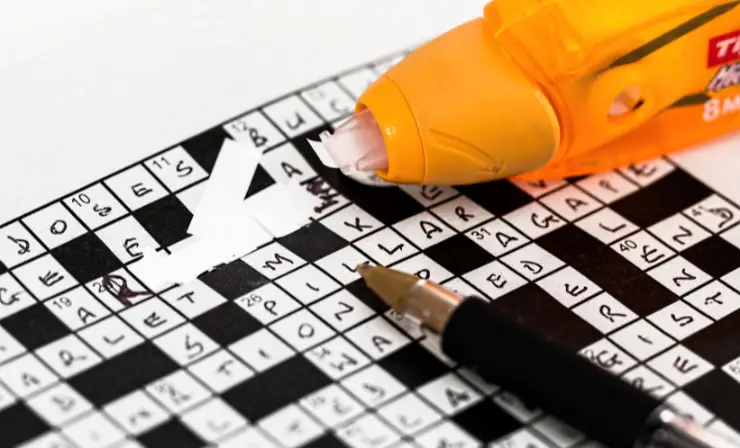
Activity Pages, a low-difficulty brain break for high school students, include a range of printable sheets like crosswords, word searches, sudoku, and coloring pages. Designed to be approachable and engaging, these activities cater to a wide range of interests and skill levels, ensuring that every student can participate and benefit. The primary advantage of this brain break lies in its cognitive benefits. The puzzles and problem-solving activities like crosswords and sudoku enhance students’ analytical skills, problem-solving capabilities, and pattern recognition.
On the other hand, coloring pages and creative tasks offer a different kind of benefit by boosting imagination and artistic expression. This allows students a moment of creative freedom and personal expression, providing a much-needed mental break from the structured academic environment. Overall, “Activity Pages” offer a balanced mix of intellectual stimulation and creative exploration, making them an excellent brain break choice for high school students.
If you’re not familiar with solving sudoku puzzles yet, take a look at this video. It offers a comprehensive guide to help you get started.
2. Would You Rather Game
Materials needed: A list of “Would You Rather” questions, a whiteboard or notepad for noting down scenarios
Difficulty level: Low
Developmental benefits: Encourages communication and understanding of diverse perspectives; stimulates critical thinking and decision-making.

Playing Would You Rather as a brain break is an ideal, low-difficulty activity for high school students. It requires just a list of questions and optionally a whiteboard or notepad for noting down scenarios. This game is not only popular and enjoyable but also beneficial in several ways. It encourages students to engage in communication and understand diverse perspectives. As they come up with and answer various scenarios, they actively participate in stimulating discussions that foster critical thinking and decision-making skills.
This interactive game gets everyone thinking and laughing, creating a lively and positive atmosphere. It’s a great way for students to take a break from academic learning, relax, and bond with their peers over fun and thought-provoking questions. The simplicity and flexibility of the game make it easy to adapt to any classroom environment, ensuring that every student can have a good time and benefit from this engaging brain break.
Need ideas for questions? Check out this video for a selection of Would You Rather game questions you can use.
3. Quiet Ball Activity
Materials needed: A soft ball (like a foam or beach ball) that is easy to catch and throw.
Difficulty level: Low
Developmental benefits: Promotes teamwork and understanding of group dynamics; enhances focus and self-control.
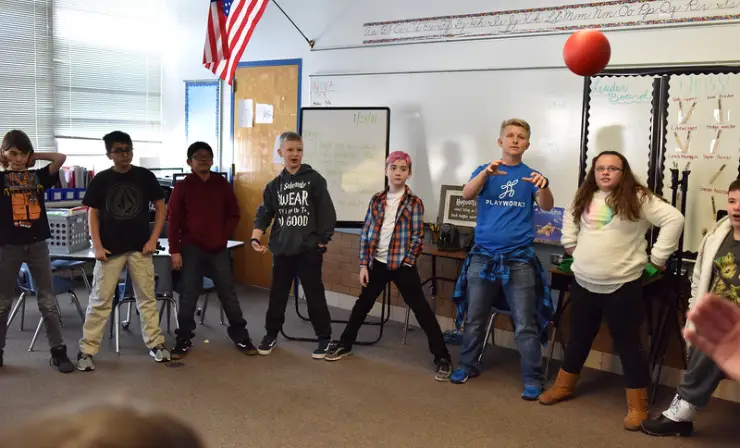
The Quiet Ball Activity requires only a soft ball, such as a foam or beach ball, that is easy to catch and throw, making it a low-difficulty but engaging activity. The essence of this game lies in its combination of physical activity and the challenge of maintaining silence. Students are tasked with tossing the ball to each other quietly, with the primary objective of keeping the noise level to a minimum. Talking, throwing the ball too hard, or dropping it results in elimination from the game, and the last person standing is declared the winner.
This activity not only promotes teamwork and an understanding of group dynamics but also significantly enhances focus and self-control among students. It encourages them to be mindful of their actions and their impact on their peers, fostering a sense of collective responsibility and concentration. Overall, Quiet Ball is a fun and inclusive way to break the monotony of the classroom, providing a refreshing change that benefits both the mind and the body.
Here’s a demonstration of students engaging in the Quiet Ball activity.
4. The Atom Game
Materials needed: No specific materials are required, just open space for students to move around.
Difficulty level: Low
Developmental benefits: Encourages movement and agility, and teaches quick collaboration and adaptability in group settings.
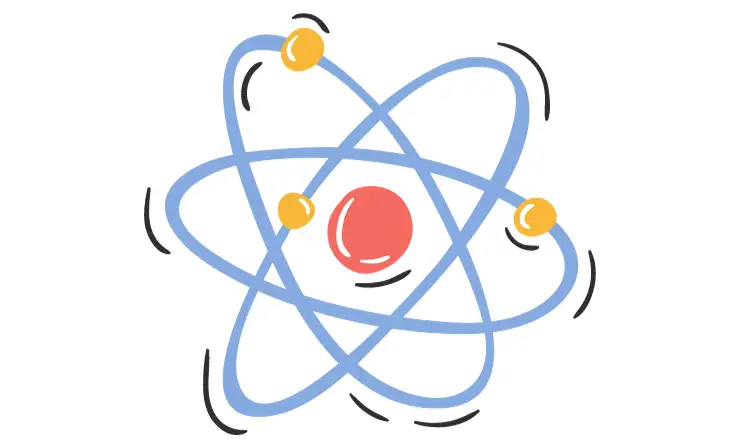
The Atom Game is an energetic and versatile brain break suitable for high school students of all ages. The game involves students moving around the room in various imaginative ways, such as mimicking an animal, a famous person, or a detective. This movement component not only adds an element of fun but also encourages physical activity and creative expression. The core of the game is when the teacher shouts a number along with the word ‘atom’, for instance, “Atom Five.” Upon hearing this, students must quickly form groups corresponding to the called number. Those who are unable to join a group are out of the game.
This aspect of the game tests students’ quick thinking and agility, as well as their ability to cooperate under pressure. It’s a great way to break up the monotony of a typical school day, injecting a burst of energy and excitement into the classroom. Additionally, it enhances students’ social skills and group dynamics understanding, as they must rapidly organize themselves into groups, fostering a sense of teamwork and collaboration.
If you’re new to this game, check out this video which demonstrates how to play the Atom Game.
5. Order Game
Materials needed: No specific materials are required, just open space for students to line up.
Difficulty level: Low
Developmental benefits: Promotes organizational skills and quick thinking; encourages interaction and cooperation.
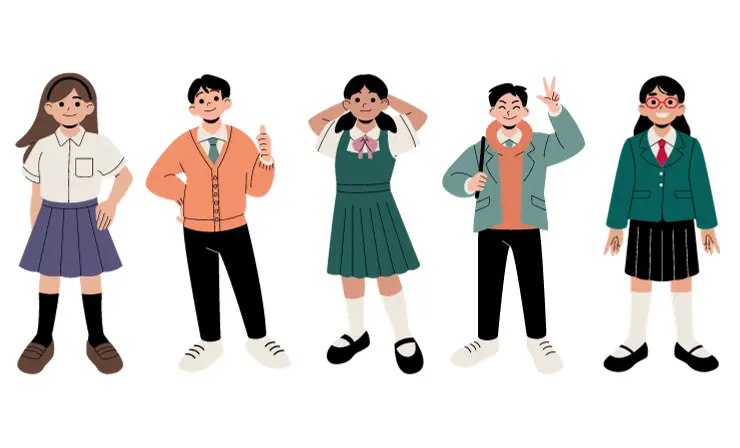
The Order Game is a swift and engaging brain break suitable for high school students, requiring minimal setup and no specific materials apart from some open space. It’s a low-difficulty activity that significantly enhances organizational skills and quick thinking. In this game, students are instructed to form a line based on a specific criterion, such as alphabetical order of their first or last names, the month and day of their birthdays, or their height. This seemingly simple task encourages students to interact and cooperate, fostering social skills and teamwork.
It’s an excellent way for students to learn more about their peers while engaging in a light-hearted competition. The game also prompts students to think on their feet and make quick decisions, enhancing their cognitive agility. Besides, it’s a great way to break the routine of a typical classroom setting, providing a refreshing and enjoyable interlude that helps refocus their minds for subsequent learning activities. Overall, the Order Game is a fun and beneficial brain break, promoting both social interaction and cognitive development.
Check out this video for a demonstration of how to play this game.
6. Four Corners
Materials needed: Signs or labels for each of the four corners of the room, indicating different answer choices.
Difficulty level: Low
Developmental benefits: Encourages decision-making and assertiveness; involves moderate physical activity through movement to different corners.
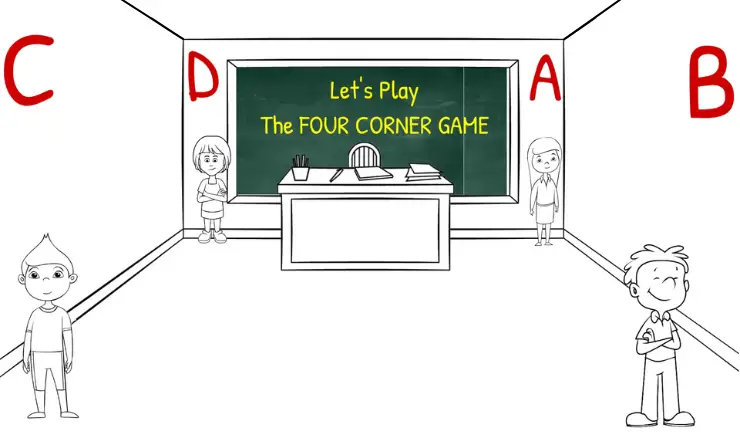
Four Corners is a simple and dynamic brain break activity designed for high school students. The game requires only signs or labels for each of the room’s four corners, representing different answer choices. With a low difficulty level, it’s an accessible activity for all students. The essence of Four Corners lies in its ability to promote decision-making and assertiveness. In this game, the teacher poses questions, each with four possible answers. Students must then move to the corner of the room that corresponds to their chosen answer.
It’s an excellent way for students to express their opinions and preferences in a non-verbal manner, fostering a sense of individuality and confidence. Additionally, the movement involved in transitioning between corners offers a welcome physical break from sitting. This activity not only energizes students but also encourages interaction and light-hearted competition, making it an effective way to re-energize and refocus students for subsequent classroom tasks.
Watch this video to see a demonstration of how to play this game.
7. Back Writing Activity
Materials needed: Paper and pens if writing is to be done on paper, no materials needed if writing is done imaginatively with fingers.
Difficulty level: Low
Developmental benefits: Enhances sensory perception and communication skills; builds trust and understanding between pairs.
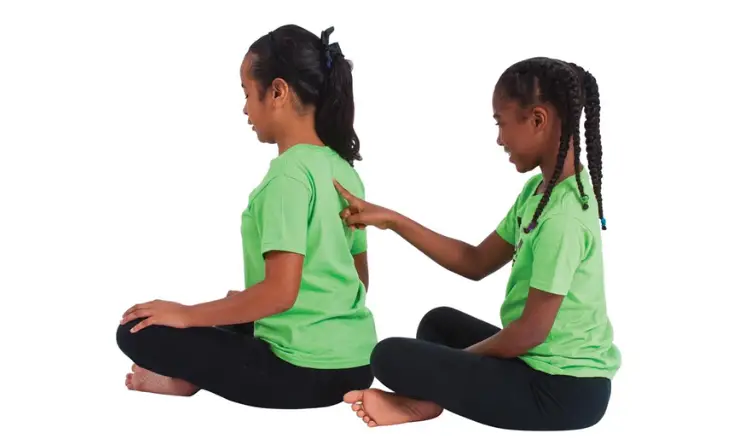
The Back Writing Activity is a simple, engaging brain break for high school students, designed to enhance sensory perception and communication skills. Depending on the preferred method, this activity may require paper and pens, or no materials at all if the writing is done imaginatively with fingers. In this activity, students pair up, and one member of each pair receives a secret word unknown to the other. The task is for the student to ‘write’ this word on their partner’s back, either by using a pen and paper or by tracing the letters with their finger. The partner then attempts to guess the word based solely on the sensation of the letters being formed.
This brain break not only builds trust and understanding between pairs but also challenges students to communicate in a non-verbal, tactile way. It’s an innovative approach to fostering interpersonal connections and enhancing sensory awareness, making it a valuable and enjoyable break from the usual classroom activities.
Take a look at the following video to learn more about this activity.
8. Card Tricks
Materials needed: A deck of playing cards.
Difficulty level: Medium
Developmental benefits: Improves memory and concentration; develops fine motor skills and hand-eye coordination.
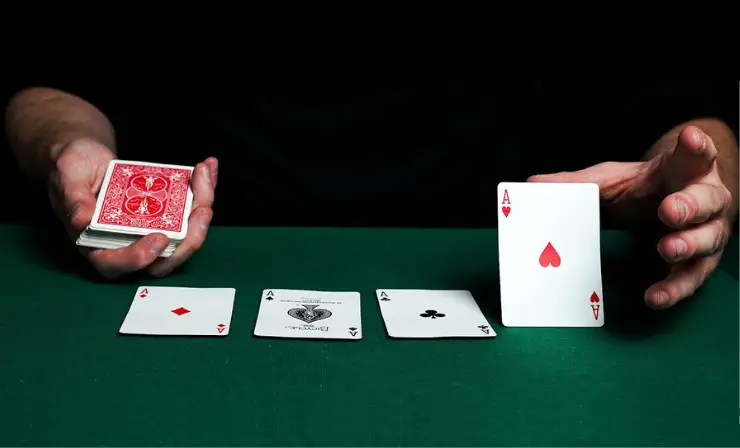
Card tricks can be an engaging and intellectually stimulating brain break designed for high school students. Requiring only a deck of playing cards, this activity falls under a medium difficulty level, making it accessible yet challenging enough to captivate students’ interest. The primary objective of this activity is not just entertainment but also to enhance cognitive abilities and dexterity. As students delve into learning and performing various card tricks, they inadvertently improve their memory and concentration. This is due to the need to remember sequences and patterns, a fundamental aspect of most card tricks.
Additionally, mastering these tricks necessitates fine motor skills and precise hand-eye coordination, fostering the development of these crucial physical skills. Whether performed individually or in small groups, this brain break offers a unique combination of mental and physical engagement. It encourages students to step away from their routine academic work, relax, and immerse themselves in an activity that is both fun and beneficial for their cognitive and motor skill development.
For a selection of card tricks to learn, take a look at the video provided below. This is a collection of 8 tricks that are simple enough for anyone to learn and perform.
9. Dance and Music Party
Materials needed: Speakers or a sound system.
Difficulty level: Medium
Developmental benefits: Promotes physical activity and coordination; boosts mood and provides a fun, stress-relieving outlet.
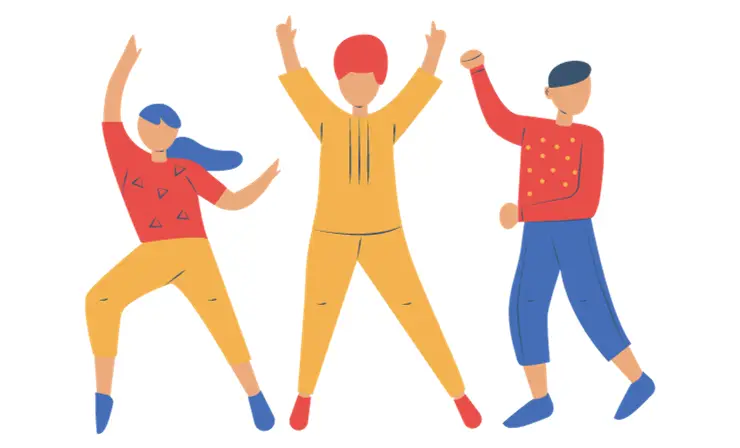
The dance and music party is a dynamic and engaging brain break for high school students, requiring only a sound system or speakers. Classified as medium difficulty, it’s an activity that promotes physical movement and coordination, while also serving as a lively and enjoyable stress reliever. During this break, students are encouraged to let loose, sing along, and showcase their dance moves, creating an atmosphere of fun and relaxation. It’s an excellent opportunity for them to mingle and interact in a less formal setting, offering a much-needed diversion from the usual classroom routine.
This activity not only uplifts the mood but also provides a healthy outlet for energy and creativity. It’s particularly effective in breaking the monotony of academic sessions, reenergizing students, and fostering a sense of community and camaraderie in the classroom. Overall, the Dance and Music Party is a perfect blend of physical activity, fun, and social interaction, making it a great choice for a brain break in high school settings.
Disney songs are universally loved. Here’s a compilation that’s perfect for this brain break.
10. Rhythm Activity
Materials needed: No specific materials are required. Optionally, you can use musical instruments or clapping as part of the rhythm.
Difficulty level: Medium
Developmental benefits: Develops listening skills and pattern recognition; promotes unity and cooperation in a group setting.
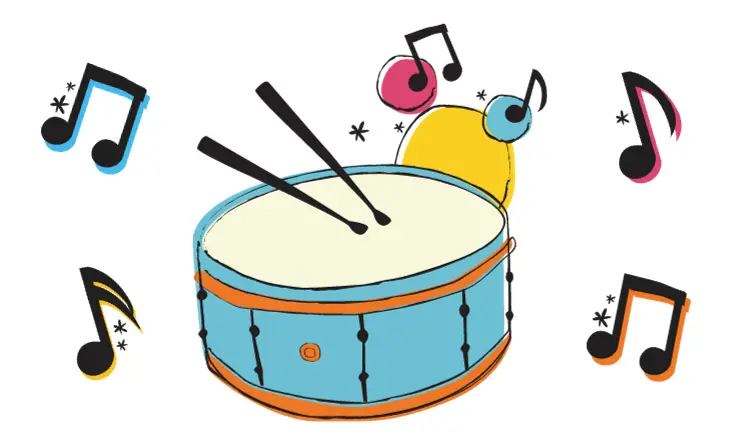
The Rhythm Activity is a medium-difficulty brain break that is perfect for high school students. It’s akin to a musical version of Simon Says, where one student initiates a rhythm, and the rest of the class follows, each adding their twist to it. This exercise not only develops listening skills and pattern recognition but also fosters unity and cooperation. As students focus on maintaining and building upon the rhythm, they learn to work harmoniously in a group setting, synchronizing their actions with others.
The challenge of not missing a beat keeps the activity engaging and tests their concentration and rhythmic skills. This brain break offers a creative and interactive way to re-energize the classroom atmosphere, encouraging students to engage in a collective musical experience that promotes teamwork and a sense of community. It’s an enjoyable and educational interlude from academic work, perfect for refreshing students’ minds and bodies.
Alternatively, you can play the classic game of Simon Says. Check out this video for more information.
11. Figure Eight Game
Materials needed: No specific materials are required, just open space for students to move around.
Difficulty level: Medium
Developmental benefits: Encourages physical movement and coordination; promotes spatial awareness and quick decision-making.
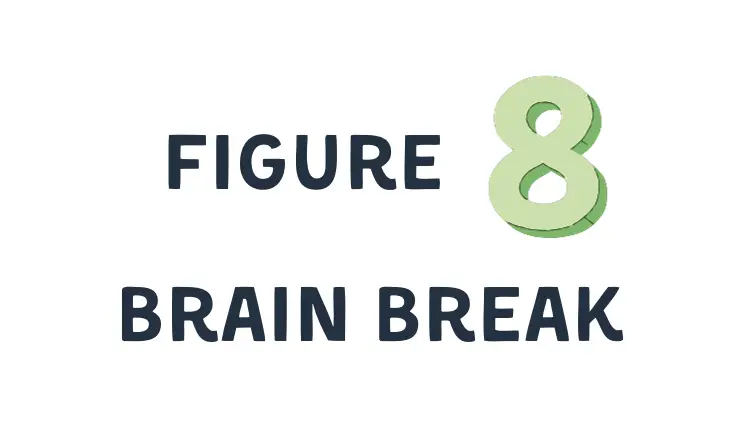
The Figure Eight Game is an enjoyable and energetic brain break, ideal for high school students looking to expend some energy and improve their physical coordination. This medium-difficulty activity doesn’t require any specific materials, just a sufficient open space for students to move around freely. The game involves students moving in a figure-eight pattern, an activity that is not only a lot of fun but also beneficial in several ways.
It promotes physical movement, crucial for students who spend much of their day seated, and enhances coordination as they navigate the complex figure-eight path. Additionally, this activity aids in developing spatial awareness and quick decision-making skills, as students need to be mindful of their surroundings and adjust their movements accordingly. The Figure Eight Game is an excellent way to channel students’ natural energy into a productive and engaging activity, breaking the routine of classroom learning and providing a refreshing physical and mental break.
Check out a classroom participating in the figure eight-game by watching David Sladkey’s YouTube video below.
12. Relay Race
Materials needed: Objects to be collected or interacted with during the race (like flowers, leaves, sticks, etc., depending on the nature of the race).
Difficulty level: High
Developmental benefits: Highly physical, promoting fitness and coordination; enhances teamwork and competitive spirit.
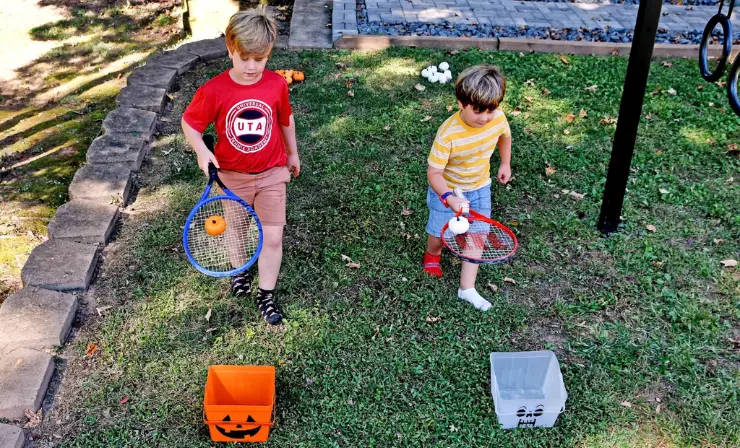
Relay races offer a highly physical and engaging brain break for high school students, suitable for outdoor settings. This activity requires various objects that teams must collect or interact with during the race, such as flowers, leaves, sticks, rocks, and grass. With a high difficulty level, relay races are not just about running; they incorporate elements of strategy and coordination, making them an excellent tool for promoting fitness and teamwork. In this brain break, students are divided into teams and compete in a relay-style race, where each team member contributes to the collective goal of gathering specific objects.
This format enhances teamwork and nurtures a competitive spirit, as students learn to work together effectively to achieve a common objective. The physical nature of the activity provides a vigorous workout, helping to improve overall fitness and coordination. Additionally, relay races offer a fun and exhilarating way to break the monotony of classroom learning, revitalizing students and fostering a sense of camaraderie and healthy competition.
Take a look at this video featuring students engaging in various versions of relay races.
13. Short Full-Body Workout
Materials needed: A workout video or a set of exercise instructions.
Difficulty level: High
Developmental benefits: Enhances overall fitness, strength, and endurance; releases endorphins, improving mood and reducing stress.
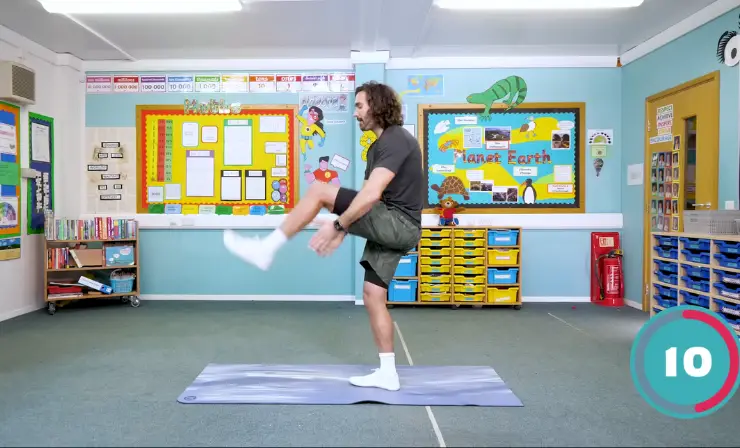
A short full-body workout is an excellent brain break for high school students, combining physical exertion with mental refreshment. This high-difficulty activity requires only a workout video or a set of exercise instructions, making it accessible and easy to implement. The workout typically involves a series of exercises targeting various muscle groups, ensuring a comprehensive fitness routine. Engaging in this kind of physical activity not only enhances overall fitness, strength, and endurance but also has significant mental health benefits. As students perform the exercises, their bodies release endorphins, natural mood lifters that can reduce stress and elevate feelings of happiness.
This break is especially beneficial in a school environment, where students often sit for extended periods. A full-body workout provides a much-needed physical outlet, helping students to re-energize and refocus for subsequent academic tasks. Additionally, it instills the importance of regular exercise, encouraging healthy lifestyle habits among young adults. Overall, this brain break offers a powerful combination of physical health and mental well-being benefits.
Students can participate in a series of workout moves designed to energize and invigorate by following this exercise video.
It is important to remember that sometimes your students may just be having an “off” day where they are not fully present. It is quite normal as adults have these days as well. When this happens, my advice is to make use of your camera for recording lectures. These gadgets are perfect because your students can go back and listen to your lecture if they are unable to be there or have a hard time paying attention.
What is a brain break?
Brain breaks are just as they sound, a break for your brain. Every individual can use a break from time to time, especially your students who are bombarded with tests, homework, and projects. If you notice that your students have done so well with studying and turning in their homework, why not give them a brain break every so often? It really can make a difference as breaks typically help students refocus and gain motivation.
With students having lots of energy, scheduling breaks will help them get some of their wiggles out and have some fun. In 2016, it was proven by psychologist, Karrie Godwin, and her researchers that brain breaks not only give students a moment of downtime but also “increase their productivity and provide them with opportunities to develop creativity and social skills.” According to the study that was conducted by this team, brain breaks also “decrease stress, boost brain function, and are an essential part of learning.” You can read more about the results of the research.
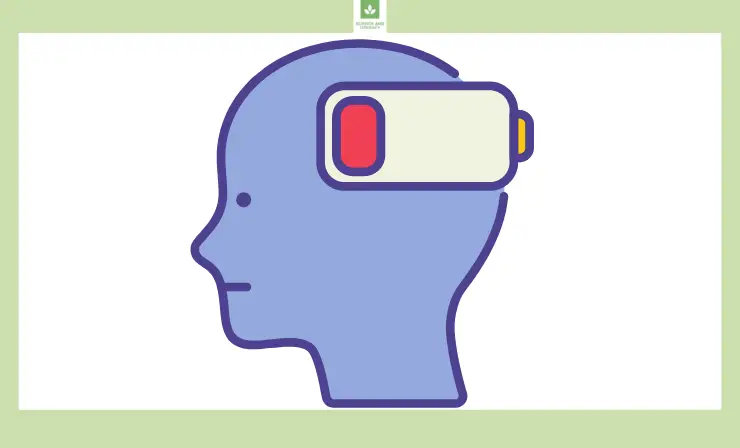
You can give your students a brain break by letting them do an activity of their choosing for a certain amount of time, or you can plan a learning activity that will still get them thinking and using different parts of their brain. I recommend doing both often to switch things up. Brain breaks are wonderful because they motivate other parts of the brain while giving the other parts time to rest and refocus. By routinely incorporating these activities into your classes, you will give your students the opportunity to improve their mood, memory, and attention. It is also important to note that you do not always have to play a game or do an activity to give your students a brain break. Stretching, moving around the room, or singing a simple song will also give them a moment to re-energize their brains.
If you are looking for an activity to do during a brain break, check out Mind Oddities’ YouTube video. In the video, you will be shown 12 illusions that will test your brain. These are fun and intriguing activities you can try with your students that will give them a break as well as exercise their brains.
During a brain break, using objects in the classroom to get your students’ minds off the books and lectures is a great idea. I recommend doing this by using your interactive whiteboard, which is a fun tool that can do so much. If you would like to learn more about interactive whiteboards and see which one would be best for your classroom, read my other article by clicking here.
Benefits of High School Brain Breaks
Research shows the positivity of brain breaks in the classroom. In fact, the positive benefits impact students of all ages. Some of the changes that you may see after enforcing break breaks in your classes include great behavior, better productivity, enhanced creative thinking and problem-solving skills, and more comprehension.
Even high school students enjoy @GoNoodle for brain breaks! ? @fortheluvoflang @YOUR_WCHS pic.twitter.com/YAvbXFyAtf
— Christa Rinehold (@crinehold) September 16, 2019
I see brain breaks as a win-win for both students and teachers. Students need these types of breaks continuously throughout the school year, which will maximize their performance and efficiency at school. In return, the teachers will be able to have a better teaching experience as the students will be able to listen, understand, and retain the information better.

This will also lead to higher test scores, meaning the teacher did their job well. Stress and frustration will be decreased for teachers and students, while attention and productivity will be increased. Isn’t it amazing that something so little can make a difference for so many people? For that reason, you should think about including brain breaks for high school students in your educational plan for the year.
To give your students a brain break, consider doing the acting game. This consists of going around the room and letting your students take turns doing a one-sentence story. For a demonstration showing you how this works, watch Liana Rivas’ YouTube video.
Another activity to try while giving your students a brain break is the blink game. To see how to do this, take a look at David Sladkey’s YouTube video. He believes that this will help refresh and refocus your students’ attention.
I recently purchased a document camera because these devices are great for students with all types of learning styles. I have also learned that they are handy when it comes to brain breaks. You can place papers or objects underneath them and have your students guess what is being shown. You can find more information on document cameras in my specialized article on the subject.
Useful Resources:
- Lesson planning
- How to get kids to (REALLY) listen: 7 steps for success
- How brain breaks can help kids with homework frustration
Conclusion
I hope this article helped you understand why brain breaks for high school students are necessary for the health and happiness of generations to come. Every single person needs the opportunity to be able to catch their breath and live in the moment for a few seconds. Therefore, your students may come back and thank you in the future for giving them the time to be kids when it felt like the world was on their shoulders. These breaks may seem simple and small, but I guarantee that they will help in big ways.
For inspiration on ice breakers suitable for high school students, take a look at a dedicated article on the topic.
- Overview of 22 Low-Code Agencies for MVP, Web, or Mobile App Development - October 23, 2024
- Tips to Inspire Your Young Child to Pursue a Career in Nursing - July 24, 2024
- How Parents Can Advocate for Their Children’s Journey into Forensic Nursing - July 24, 2024




I am a highschool teacher and I am not sure that my students will be interested in such breaks.
Hi, I didn’t say in my article that they have to be enthusiastic about such breaks, but it’s useful for them and their knowledge) It’s our responsibility to show our students that education can be fun and exciting!)